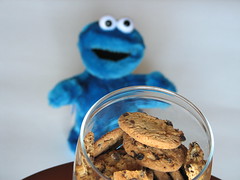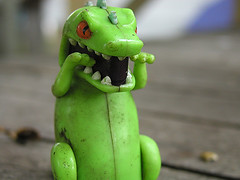How to Create Monster Photoshop Files
A recent comment by reader Libeco got me thinking about something I discovered a while back. The comment had to do with opening RAW images as “Smart Objects” in Photoshop and duplicating them for certain effects. My response: beware your file size.
Photoshop Documents (.PSD files) can become very large if you're not careful. I've managed to create files that were over 500MB in size (I've even had some approach 1GB). This can be a serious issue if you have many Photoshop Documents hiding in your archives. Think about this: if you shoot 4GB of photos in a single outing, it would only take 8 Photoshop files (at 500MB) to double your used hard drive space. So however many photos you thought you could keep on your hard drive, cut that number in half… or more.
As I go through some examples of file sizes, keep in mind that I'm using 12MP photos brought into Photoshop with 16 bits/channel and Adobe RGB color space. So without further ado, here are five great ways to create monster Photoshop Documents that will devour your hard drive:
1. CREATE A PHOTOSHOP DOCUMENT
Photoshop can turn a 18MB RAW file into a 70MB PSD file in no time flat — and that's without even doing anything to the photo! So here's a tip: if you can create a finished photo with Lightroom or ACR, don't push it into Photoshop out of habit. One of my unprocessed RAW files takes up 18.2MB of disk space. Once I've processed the file in ACR it takes up 18.2MB — plus it's completely non-destructive.
Photoshop is intended to give you the ability to apply localized image adjustments via layers and layer masks. It also has other uses such as blends, effects, and some other Photoshop techniques you can't get from ACR or Lightroom. But if you're using Photoshop to apply some curve adjustments and maybe boosting the saturation, you're missing the point of the RAW processing software.
2. USE UNNECESSARY SMART OBJECTS
Smart objects are great tools in Photoshop — they allow for added flexibility with certain features and effects within Photoshop. But that luxury comes at a small cost in file size. Using the previous example, but with a smart object as the base layer, our 70MB PSD file turns into a 74MB PSD file. While an extra 4MB isn't going to kill you, too many unnecessary smart objects will start to add up.
3. DUPLICATE LAYERS NEEDLESSLY
Sometimes duplicate layers are needed to ensure non-destructive adjustments. But duplicating an entire layer of information seriously bulks up your file. Going back to the original example file, I added a single duplicate layer. This resulted in a 109MB PSD file as opposed to our 70MB file! So you can see how just a few of these duplicate layers or copies of layer merges can turn your file into a little monster.
4. USE RGB SPACE IF IT'S B&W
The thing about RGB color space is that it contains color information for the red, green, and blue channels. The thing about black & white photos is that the RGB channels are identical, which is what creates “grayscales”. So when you save and work with a b/w image as if it were a color image, you're wasting 2/3 of the color information and increasing your file size by 3 times.
Opening the same file as a grayscale image through ACR (and keeping the 16 bits/channel on our 12MP image), we end up with a 23MB PSD file as opposed to our 70MB file. So my suggestion: do the grayscale conversion with your RAW processor rather than Photoshop if at all possible. Certainly, there are instances when you'll want to use black and white conversion techniques that require the use of color channels in Photoshop, but just be aware that your file size will be larger.
5. MAXIMIZE COMPATIBILITY FOR OLDER VERSIONS
This one is a real killer, and it's easy to overlook. Photoshop allows you to maximize compatibility of your files so they play nice with older versions of the software. This is handy if you are working with clients or customers who are not up to speed with their software updates, but most of us will never need such a feature.
There is a setting under the “File Handling” option in the “Preferences” dialog for this compatibility issue. Allowing Photoshop to maximize the compatibility will turn our 70MB PSD file into a 123MB PSD file. So if you don't need that added feature of backward compatibility, turn it off and save yourself some disk space.
WHAT HAVE WE LEARNED?
The big message I want to get across is not that Photoshop is a bad thing or that you should avoid big files at all cost. My main point to all of this is that you should be aware of what you're creating while using a tool like Photoshop. Keep an eye on your file sizes, check your settings, weed out the unnecessary stuff, and use leaner methods if at all possible.
What else can you do to ensure a smaller footprint on your hard drive?


My Camera World
April 15, 2008I Love those monster files. Not really, but for my editing approach it is the tool of choice.
For those images that I will turn into large prints, I regularity embed 2 or 3 versions of the file as RAW objects. This permits during the editing process to go back and fine tune each of the RAW versions to achieve a specific effect or to correct a problem that arrives with later editing layers. Each Smart object will have its own mask. The reasons I may have these Smart object layers are to;
Different exposure settings (a bit like HDR)
Warm one area and cool others. (WB)
Fine tune colours (Hue, Sat, Brightness)
Noise reduction, especially if I am bringing up the shadows and I don’t want this effect applied in lighter detail.
To get over the huge files storage problem as I keep most of my good photos on the C drive in there own folder for every print version (includes web) is to create Jpeg file with text with the same name as the PSD and backup added (Big-flower-backup.jpg) that tells me that the original Photoshop is located on the external storage once I am finished working with it.
Niels Henriksen
libeco
April 15, 2008Funny how my comment made you think. I must say though the reason I can use smart objects regularly is because I hardly save my pictures as PSD. I know I should, but I just process a RAW file, save it as a JPEG and close the file without further saving.
When I had to choose ten pictures for print (I had a coupon for 10 free A3 prints which I got with my camera) I already noticed how much time it took to select 10 pictures, but afterwards I also needed to process them again. I really have to start changing my workflow. I’m following your tutorials on your workflow and keep thinking: “ah, that’s a good idea” , but so far I haven’t used it yet.
I always want to do too much at the same time and at the end I haven’t done anything…
Eric Bier
April 20, 2008It is my understanding that Maximize Compatibility must be used for Photoshop to work with Lightroom.
If you are willing to give up the ability to re-edit your Photoshop adjustments, you can, flatten the layers, reduce the image size, and change to 8-bit. This will reduce huge files to 1 to 3 mb. This works well for a web workflow or other situations where prints are rarely made.
In my case, I have thousands of images, and I very rarely print. When I do print, I start from scratch and optimize the file for print. If I spent hours on each image (see Welcome to Oz, Versace), then I would save large PSD files, however, I consider this more like a painted work of art than photography.